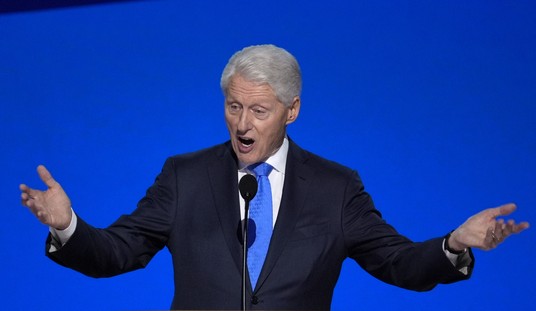In my column for The Fiscal Times today, I remind readers that budgets are statements of priorities. Barack Obama’s budget shows his priorities on many levels, both at the macro and micro level. Given the large amount of new spending and higher taxes, it’s very easy to conclude at the macro level that Obama doesn’t think that spending reductions are a priority at all. How about on the micro level? Changes to three different programs give an even clearer indication of Obama’s priorities:
One is to the D.C. Opportunity Scholarship Program that helps poor children opt out of failing public schools in the nation’s capital. In 2011, Republicans in Congress fought to restore funding to the voucher program after Obama cut it in his FY2010 budget, and they managed to restore those funds for five years in the FY2012 compromise package.
Now, Obama has removed the entire $13 million for this program in his FY2013 budget proposal, a move that his union supporters in the National Education Association will cheer, but which will create despair among parents whose children will once again be denied access to school choice in Washington D.C.
Obama’s red line has also cut the Federal Flight Deck Officer Program in half, reducing its funding from an FY2012 level of $25 million to just $12 million in FY2013. At the same time, the budget reduces the federal Air Marshal budget by 4 percent, a reduction of $36.5 million. FFDO trains and provides continuous certification for commercial pilots to arm themselves in the cockpit, and air marshals provide plainclothes security to intervene in any security emergency. …
The cost savings from pushing poor kids out of the voucher program and making commercial flight less safe together add up to about $63 million. On the other side of the ledger: taxpayer subsidies for buying Chevy Volts. …
Obama proposes to boost the subsidy to $10,000 per car and projects at least 10,000 units sold in FY2013, which would be a new cost of $100 million in that year alone just from the taxpayer-funded rebates at the point of sale, far outstripping what was saved by eliminating the DC voucher program and cutting effective airline security.
Who gets these subsidies? According to GM’s CEO Dan Akerson, the average annual salary for a Volt buyer is $170,000 per year. That is about the average income for a BMW owner, about $40,000 a year higher than the average Cadillac buyer, and about $30,000 more than the average Lexus driver. Only a high-income earner could afford to take the financial risk of owning an electric vehicle that will have zero resale value when the batteries fail in five to eight years.
We’ve written at length about Obama’s hostility to the DC voucher program, but the FFDO cuts are something new. The program’s annual operating budget hasn’t increased in years over its current $25 million, which goes to the administrative costs of training and certifying commercial airline pilots to arm themselves in order to protect the cockpit against terrorist attacks. The pilots bear most of the cost of the training; they have to either use vacation time or lose flight pay to spend a week in New Mexico to get their initial certification to carry, and get the routine requalifications on their own time as well.
How effective are these federal flight deck officers (FFDOs)? The president of their association, Marcus Flagg, testified before the Senate Committee on Homeland Security and Government Affairs in November of last year to emphasize the importance of this relatively inexpensive program. Flagg told the Senate that the FFDO program was “the most cost effective security measure we have to date,” and that FFDOs are “the first line of deterrence and the last line of defense.” However, Flagg also told the Senate that TSA was hostile to the FFDO program from its inception, and that the agency actively “restricted FFDOs as much as possible.”
Interestingly, TSA only got a 3% cut in funding down to $5.1 billion for FY2013 in Obama’s proposal, even though the airline security fee paid by travelers per leg of travel increases from $2.50 to $5 when the budget passes. The air marshal program got a 5% cut, as noted above. How cost effective is the FFDO program? Flagg testified:
Currently, FFDOs provide five times the coverage of the Federal Air Marshal Service at 1/25th the cost. The cost of each Federal Air Marshal is around $3,300 per flight. A pair of FAMs cost roughly $6,600 per flight. FFDOs cost roughly $15 per flight. Comparing the two, the same expenditure allows 440 FFDO missions to the single FAM mission. Which program is more cost effective?
It’s clearly more cost effective than subsidizing Chevy Volts. Just when the FFDO program needs more pilots, as Flagg warned, the nearly 50% cut in the FFDO program budget will ensure fewer new pilots enter the service and fewer of the current FFDOs requalify. If we are going to spend money, why are we spending it to subsidize the purchases of vehicles by people averaging $170,000 a year in salary rather than on commercial flight security, which is an actual federal responsibility?







Join the conversation as a VIP Member